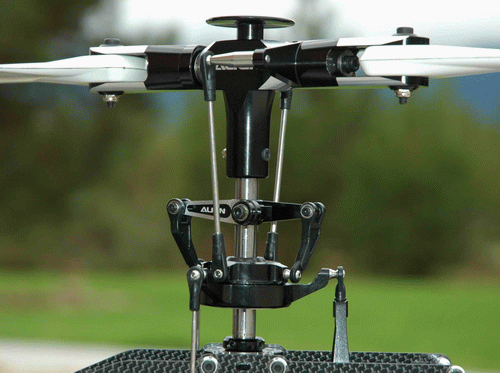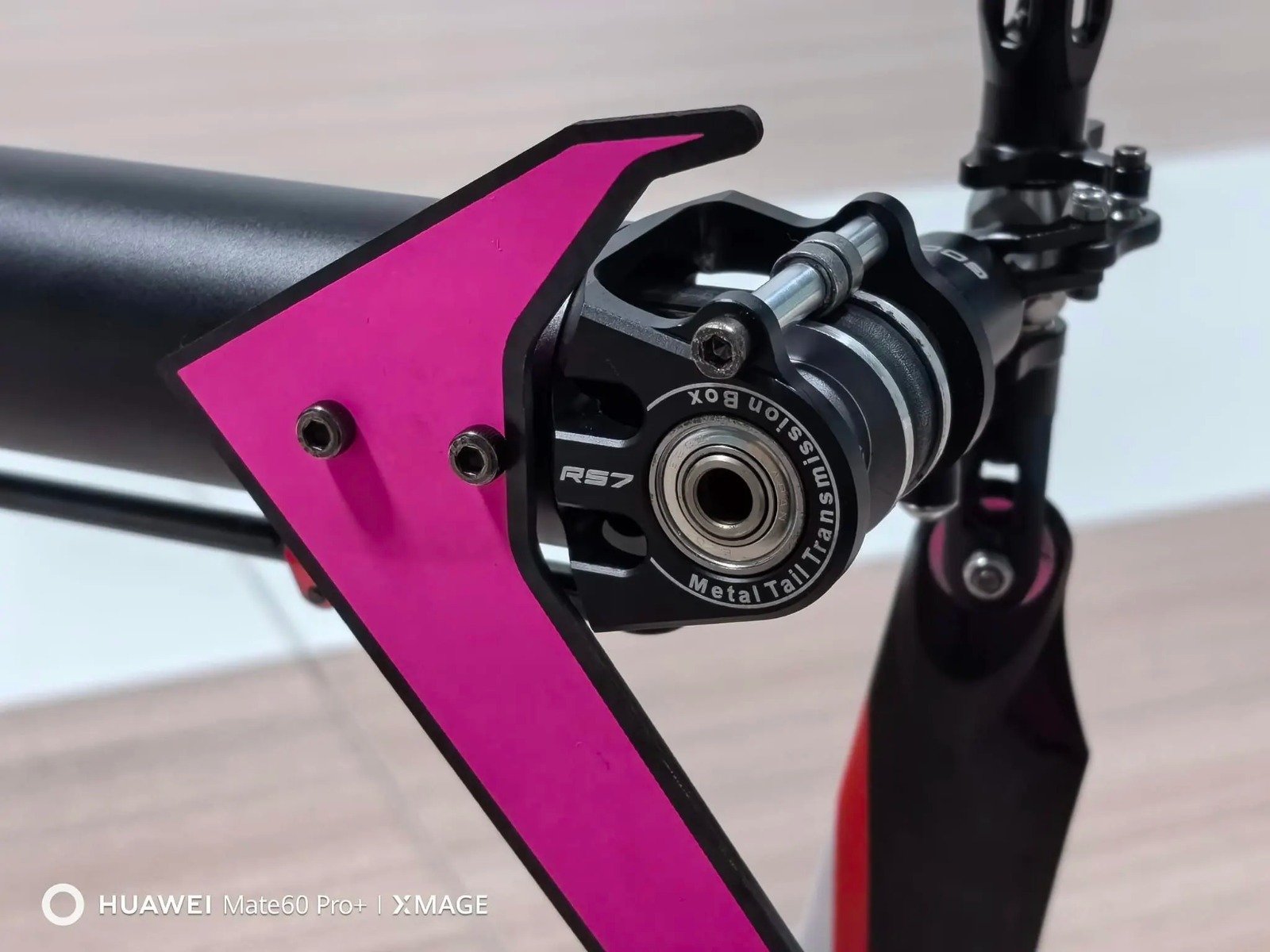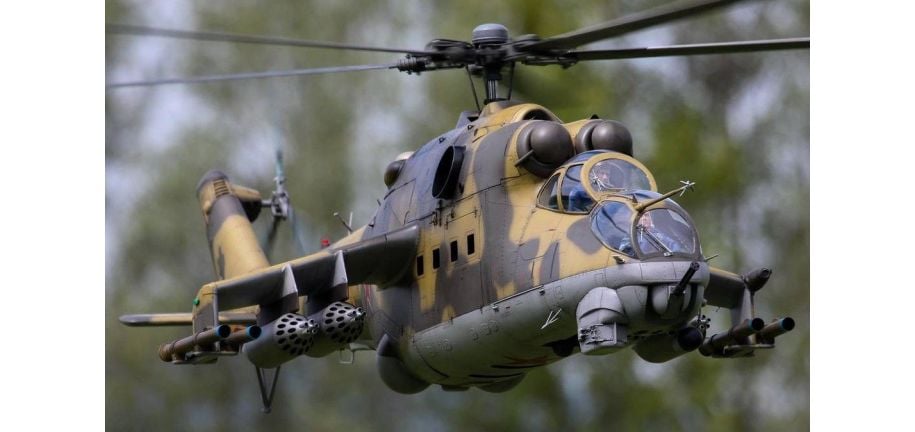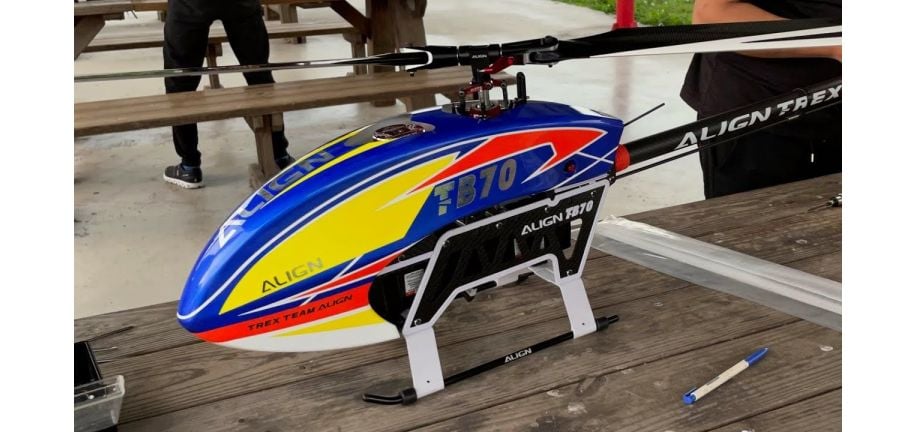Are you curious about RC helicopters?
Wondering how they work, the different types available, and what components make them fly?
In this article, we will explore the world of RC helicopters, from the single rotor to collective pitch models. Discover the uses of these flying machines, from hobbyist fun to military training. Learn about safety precautions and how to choose the right RC helicopter for you. Get ready to soar to new heights with this comprehensive guide.
Key Takeaways:
- An RC helicopter is a small, remote-controlled aircraft that mimics the movement and flight of a real helicopter.
- RC helicopters use a combination of rotors, motors, and servos to control their movement and flight.
- There are different types of RC helicopters, including single rotor, coaxial, tandem, and collective pitch, each with its own unique design and flight capabilities.
What Is An RC Helicopter?
An RC helicopter, short for a remote control helicopter, is a model aircraft that is controlled remotely using a radio control system.
These fascinating miniature aircraft mimic the mechanics of real helicopters with components like the pitch, collective, cyclic, and throttle, allowing pilots to manoeuvre them with precision. The pitch controls the angle of the rotor blades, the collective manages overall lift, the cyclic adjusts the blades' angle as they rotate, and the throttle regulates engine power.
How Does An RC Helicopter Work?
The operation of an RC helicopter involves intricate mechanisms that control the pitch, collective, and cyclic movements of the main rotor, with modern models utilising advanced electronic control systems.
These mechanisms play a crucial role in stabilising the helicopter during flight and enabling pilots to perform precise manoeuvres. The flybar, a traditional component, acts as a stabilising device by counteracting the forces acting on the rotor blades. On the other hand, flybarless systems, which have become more popular in recent years, achieve stability through electronic sensors and precise calculations.
Electronic controls further enhance the performance of RC helicopters by regulating blade pitch, adjusting collective pitch for climbing or descending, and controlling cyclic movements for directional changes. This intricate coordination of components allows for smooth and controlled flight, catering to both beginner pilots and enthusiasts seeking aerobatic challenges.
What Are The Different Types Of RC Helicopters?
RC helicopters come in various configurations, including single rotor, coaxial, tandem, and models with fixed pitch (FP) or collective pitch (CP) setups, each offering unique flight characteristics.
Single rotor helicopters have a main rotor system that enables more agile movements and greater control over complex manoeuvres. On the other hand, coaxial designs feature two sets of rotors on the same axis, providing enhanced stability and ease of operation, making them perfect for beginners.
Tandem rotor helicopters, with two main rotors spinning in opposite directions, offer exceptional lift capabilities, making them suitable for heavy-duty tasks and precise hovering. Understanding the difference between fixed pitch (FP) and collective pitch (CP) models is crucial, as FP models have a fixed blade angle, while CP models allow for variable blade angles, facilitating advanced manoeuvres and aerobatics.
Single Rotor
Single rotor RC helicopters feature a main rotor that provides lift and propulsion, with yaw control achieved through the tail rotor or variable main rotor speed.
These helicopters are known for their agility and responsiveness, thanks to the precise control of the main rotor's speed and pitch. The main rotor is responsible for generating the majority of the lift required for flight, while also creating the forward thrust necessary for movement.
Yaw control, which is the helicopter's ability to rotate around its vertical axis, can be manipulated through the tail rotor's anti-torque function or through adjustments in the main rotor's speed differential. The gyro and electronic control systems play a crucial role in maintaining stability and controlling the helicopter's orientation in various flight manoeuvres.
Coaxial
Coaxial RC helicopters utilise two sets of rotor blades spinning in opposite directions to counteract torque effects, providing stability and eliminating the need for a tail rotor.
By employing this unique dual-rotor design, these helicopters can achieve increased flight stability and precision. The throttle management in these helicopters is crucial for altitude control, with each set of rotor blades working independently to alter lift and maintain a balanced flight. The torque-balancing benefits of this setup result in smoother and more controlled manoeuvres, making coaxial RC helicopters ideal for beginners learning to master flight controls. The design lends itself well to aerobatic flying, allowing pilots to perform impressive stunts and manoeuvres with ease.
Tandem
Tandem RC helicopters feature two main rotors mounted one above the other on a common axis, providing enhanced stability and precise control for aerobatic flying manoeuvres.
This setup allows for the helicopter to have dual sets of rotor blades which work in tandem to generate lift and manoeuvre the aircraft effectively. The rotor head mechanism is crucial in ensuring that both rotors are synchronised in their motion, thanks to the use of sophisticated cyclic and flybar setups that enable precise control over the pitch and roll of the helicopter.
Collective Pitch
Collective pitch RC helicopters allow pilots to dynamically adjust the angle of the rotor blades collectively, enabling precise control of lift and aerobatic manoeuvres through throttle and pitch adjustments.
By manipulating the collective pitch control, pilots can efficiently modulate the amount of lift generated by the rotor blades. This adjustment is crucial for controlling altitude and executing smooth take-offs and landings. The integration of electronic control systems, such as gyros, enhances stability during flight, compensating for external factors like wind gusts. These advanced systems work seamlessly with the pilot's inputs, ensuring a more responsive and accurate control experience for performing intricate aerial stunts and manoeuvres.
What Are The Components Of An RC Helicopter?
The components of an RC helicopter include the main rotor for lift, the tail rotor for yaw control, a gyroscope for stability, a batteryfor power, a receiver for signal reception, and servos for controlling various functions.
Understanding the intricate workings of an RC helicopter involves looking into the role of each crucial element. The main rotor is responsible for generating lift, essential for achieving flight. Meanwhile, the tail rotor plays a pivotal role in controlling the yaw, ensuring directional stability.
A crucial aspect contributing to RC helicopters' stability is the gyroscope, a device that senses orientation changes and helps maintain a steady flight path. Powering these aircraft is the battery, providing the necessary energy to operate electronic control systems and enable aerobatic maneuvers.

Main Rotor
The main rotor of an RC helicopter consists of rotor blades that rotate around the rotor head, generating lift and propulsion for flight.
The rotor blades are engineered with precision to harness the principles of aerodynamics, utilising their shape, angle of attack, and speed to create air pressure differentials that produce lift.
The rotor head, located at the heart of the main rotor system, houses components like the cyclic and collective mechanisms, which control the orientation and pitch of the blades during flight.
By adjusting the cyclic, pilots can tilt the rotor disc in different directions, enabling the helicopter to move forwards, backwards, or sideways. Simultaneously, the throttle manages engine power, influencing the rotor speed and, consequently, the generation of lift and thrust necessary for manoeuvring the model aircraft.

Tail Rotor
The tail rotor of an RC helicopter is responsible for controlling yaw movements by counteracting the torque generated by the main rotor's rotation, ensuring stable and controlled flight.
Yaw control is crucial in enabling the helicopter to turn left or right smoothly as the tail rotor's thrust helps counterbalance the torque effect. The tail rotor plays a vital role in balancing the collective pitch changes, which affect the helicopter's vertical movements. Along with the flybar and gyro system, the tail rotor contributes significantly to maintaining precise control during manoeuvres, especially in windy conditions. By adjusting the tail rotor pitch, pilots can fine-tune flight stability and ensure a safe and enjoyable flying experience.
Gyroscope
The gyroscope in an RC helicopter functions as a stability aid, detecting and correcting deviations in yaw orientation to maintain smooth and balanced flight.
By constantly monitoring the helicopter's orientation, the gyroscope assists in ensuring that the helicopter remains on course, making it an essential component in achieving precision control.
During flight, the gyroscopic effect plays a vital role in countering aerodynamic forces, helping to stabilise the helicopter's yaw movements. This stability enhancement is especially crucial during manoeuvres like cyclic controls and aerobatic flying, where quick and precise adjustments are essential for maintaining control and executing complex aerial stunts.
Battery
The battery of an RC helicopter supplies power to the electronic control system, motor, and servos, impacting flight duration, performance, and voltage requirements.
Batteries play a crucial role in determining the overall flight capabilities of an RC helicopter. Different types of batteries, such as LiPo and NiMH, offer varying voltage outputs, affecting the throttle response, receiver signal strength, and the model aircraft's weight balance.
- Proper voltage regulation is essential to ensure the smooth operation of all components during flight, preventing potential damage or malfunction due to over or under-powering.
- The battery's capacity directly influences the flight duration, with higher mAh ratings allowing for longer and more extended flights without the need for frequent recharges.
- Considering the battery's weight and dimension are also critical factors, as they impact the overall balance, agility, and manoeuvrability of the RC helicopter in the air.
Receiver
The receiver in an RC helicopter captures signals transmitted by the remote control unit, converting them into commands that dictate the helicopter's movements and behaviours.
The receiver acts as the intermediary between the pilot's inputs and the helicopter's responses. It plays a crucial role in ensuring that commands related to pitch, throttle, and other controls are accurately interpreted. When engaging in aerobatic flying, where precision and speed are paramount, the receiver's ability to quickly process signals is essential. Through its communication with the radio control unit, the receiver facilitates seamless interaction, enabling the pilot to navigate the helicopter through various manoeuvres with precision.
Servos
Servos in an RC helicopter are small actuators that translate electronic signals into mechanical movements, controlling the aircraft's various functions such as rotor pitch, throttle, and cyclic adjustments.
When a pilot manipulates the collective control, servos adjust the pitch of all rotor blades simultaneously, influencing the helicopter's vertical motion.
Yaw control involves altering the angle of the tail rotor to manage the helicopter's direction, a task where servos play a pivotal role.
These electronic control systems work in harmony with servos to precisely manage the cyclic movements, ensuring stability and agility during flight manoeuvres.
What Are The Uses Of An RC Helicopter?
RC helicopters find applications in diverse fields, serving as recreational hobby devices, tools for aerial photography, training aids for military and law enforcement personnel, and assets in search and rescue missions.
These versatile machines offer a thrilling pastime for enthusiasts who enjoy manoeuvring them through the air with precision and skill. Their ability to capture stunning aerial shots makes them invaluable tools for photographers seeking unique perspectives. In military and law enforcement settings, RC helicopters simulate real-life scenarios, allowing personnel to practise crucial skills in a controlled environment. Their compact size and agility enable them to navigate through tight spaces during search and rescue operations, providing an extra set of eyes in challenging situations.
Hobby
Many individuals enjoy flying RC helicopters as a hobby, engaging in aerobatic manoeuvres, model aircraft building, and competitions to showcase their piloting skills.
This hobby offers enthusiasts a thrilling experience as they master the art of aerobatic flying, executing impressive flips, loops, and rolls with precision.
Model aircraft customisation is another fascinating aspect, where hobbyists meticulously adjust the pitch, flybar, and cyclic settings to achieve optimal performance and agility in flight.
Competitive events provide a platform for pilots to demonstrate their expertise, competing in challenges that test their control and manoeuvring abilities at various levels of difficulty.
Aerial Photography
RC helicopters equipped with cameras serve as valuable tools for capturing aerial photographs and videos, enabling enthusiasts and professionals to explore unique perspectives and vistas.
One of the key aspects that make RC helicopters a popular choice for aerial photography is their ability to integrate cameras seamlessly into their design. These cameras can be controlled remotely, allowing users to adjust the angle and capture stunning shots from above. The incorporation of First-Person View (FPV) systems in some models enhances the photography experience by providing real-time footage directly to the pilot. This enables precise manoeuvring and framing of shots, resulting in high-quality images and videos.
Military and Law Enforcement Training
RC helicopters are valuable assets for military and law enforcement agencies, providing realistic training scenarios, tactical manoeuvre practice, and surveillance capabilities in controlled environments.
These miniature aircraft play a crucial role in enhancing situational awareness and developing pilots' skills in operating collective, gyro, and electronic control systems. In tactical exercises, they mimic real-life scenarios to prepare personnel for mission-critical situations. Manoeuvre simulations with RC helicopters enable trainees to hone their piloting techniques and improve coordination skills.
In surveillance operations, these helicopters are used to gather intelligence, monitor areas, and conduct reconnaissance missions without putting human lives at risk. Their agility and versatility make them ideal for navigating challenging terrains and intricate obstacles, providing invaluable insights to decision-makers.
Search and Rescue Operations
RC helicopters are deployed in search and rescue missions, aiding in locating missing persons, delivering supplies to inaccessible areas, and providing aerial reconnaissance support during emergencies.
These versatile machines play a critical role in assisting emergency responders by manoeuvring through rough terrains throttle adjustments to enhance control and stability. Their advanced rotor head design allows for precision movements, enabling them to reach remote locations. The receiver technology fitted in these helicopters facilitates seamless communication with the operators, ensuring swift and effective operations.
What Are The Safety Precautions When Flying An RC Helicopter?
When operating an RC helicopter, it is essential to observe safety precautions to prevent accidents, ensure responsible flying practices, and protect both individuals and property.
One crucial aspect of safety measures is conducting thorough pre-flight checks on your model aircraft to verify that all components are functioning correctly. These checks should include inspecting the rotor blades, checking the battery connections, and ensuring the transmitter and receiver are properly synced.
Understanding flight restrictions in the area where you are operating the RC helicopter is vital. Avoid flying near crowded areas, airports, or restricted airspace as this can lead to dangerous situations and potential legal consequences.
In case of an emergency during flight, such as losing control or experiencing technical issues, knowing the correct procedures for safely landing the helicopter is crucial. Practising emergency manoeuvres like controlled descents can help you be prepared for unexpected situations.
How To Choose The Right RC Helicopter For You?
Selecting the ideal RC helicopter involves considering various factors such as flight experience, intended use, budget constraints, and desired features to match your skill level and preferences.
Understanding your flight experience can help narrow down the choices. Beginners may opt for coaxial helicopters with simpler controls, while advanced pilots might look for models with adjustable pitch and precise cyclic response.
Consider your purpose as well; whether it's for leisurely flights, aerial photography, or competitive racing, each demands different characteristics. Financial considerations play a crucial role too; finding a balance between affordability and quality ensures long-term enjoyment. Prioritising features such as gyroscopic stabilisation, customisable controls, and durable build can enhance your RC flying experience.
Frequently Asked Questions
What is an RC helicopter and how does it work?
An RC helicopter stands for a remote-controlled helicopter, which is a miniature version of a real helicopter that is operated by a remote control. It works by using a radio transmitter to send signals to a receiver on the helicopter, which then controls the movements of the helicopter's rotors and other components.
What are the different types of RC helicopters?
There are several different types of RC helicopters, including fixed-pitch, collective pitch, coaxial, and quadcopters. Fixed-pitch helicopters have a fixed angle on the rotor blades and are easier to control, while collective pitch helicopters have adjustable blades for more advanced flying. Coaxial helicopters have two sets of rotors that rotate in opposite directions for added stability, and quadcopters have four rotors for increased maneuverability.
What are the main components of an RC helicopter?
The main components of an RC helicopter include the frame, rotors, motor, battery, receiver, transmitter, and servo motors. The frame is the body of the helicopter, the rotors provide lift and control, the motor powers the rotors, the battery supplies energy, the receiver receives signals from the transmitter, and the servo motors control the movements of the helicopter.
What are the benefits of flying an RC helicopter?
Flying an RC helicopter can be a fun and exciting hobby that allows you to experience the thrill of flying without leaving the ground. It also requires focus and skill, making it a great way to improve hand-eye coordination and concentration. Additionally, it can be a great way to bond with friends and family who share the same interest.
What are some important safety tips for flying an RC helicopter?
First and foremost, always follow the instructions and guidelines provided by the manufacturer. It is also important to find an open and safe flying space, away from people and buildings. Check the weather conditions before flying and avoid flying in strong winds. Always keep an eye on the battery level and avoid flying near power lines or other potential hazards.
How can I improve my flying skills with an RC helicopter?
Practice makes perfect! Start with basic maneuvers and gradually work your way up to more advanced tricks. You can also join local RC helicopter clubs or forums to learn from experienced pilots and exchange tips and techniques. Additionally, watching tutorial videos or attending workshops can also help improve your flying skills.





